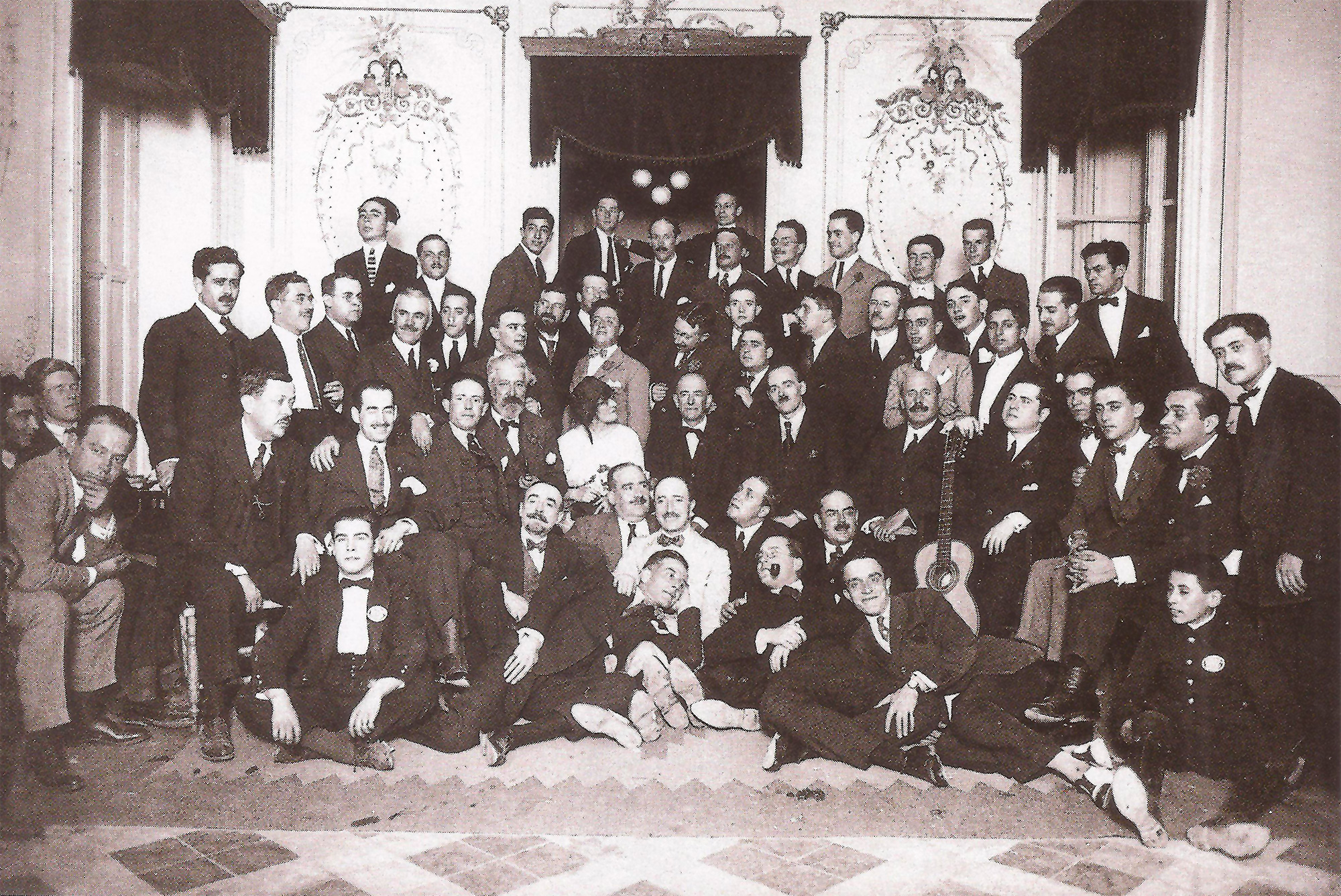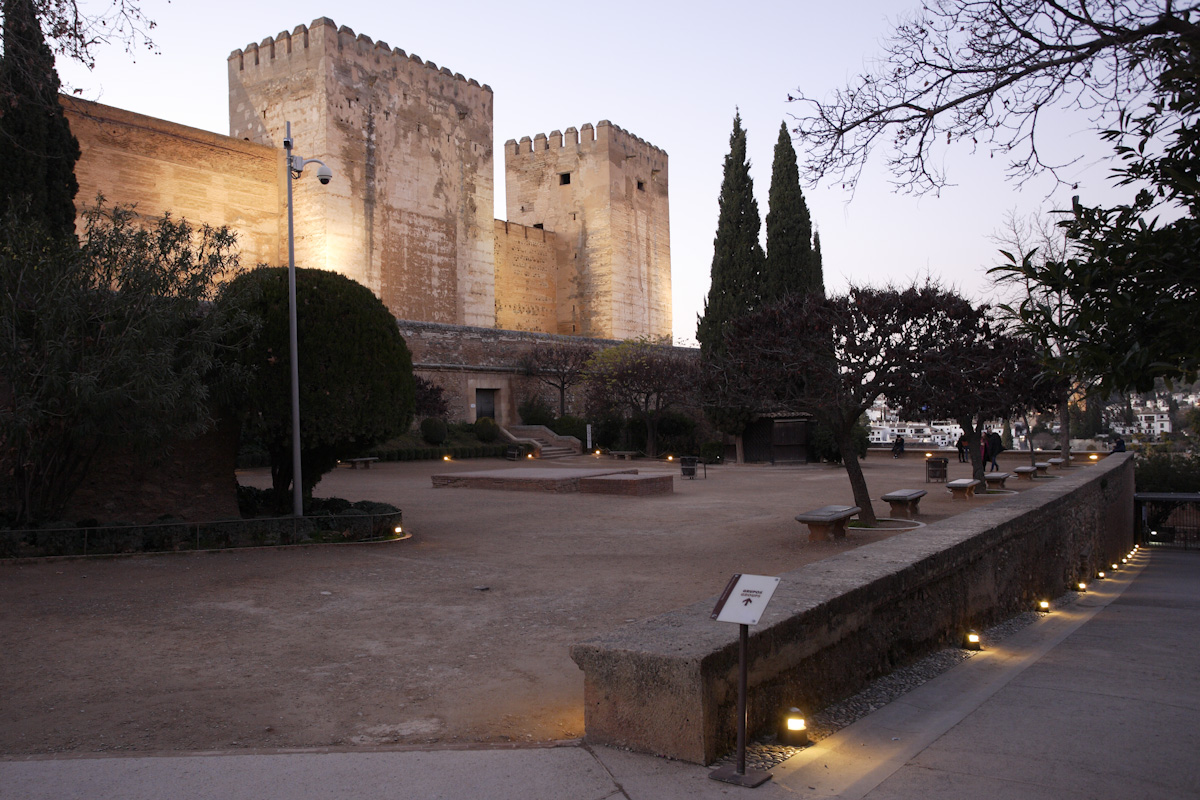The dates prior to the Flamenco Song Contest were consumed between flamenco parties (‘caracolas’ in the Chirimías House; gazpachadas on the hottest days and jayulladas (from ‘hallulla’, an Albaicín Quarter term adapted by the Spanish Language Academy that alludes to a “bread that is baked in embers, in bricks or very hot stones”). In the days before the contest Manuel Ángeles Ortiz recalls a jayullada at the Bar El Tres y Medio, in the Albaicín, with Niña de los Peines, Antonio Chacón, La Malena, La Macarrona, Manuel Torre and the organizers, among them Federico García Lorca, which ended at dawn in San Nicolás Square, the failed stage of the contest. Ángeles himself was in charge of drawing the costumes designed by Zuloaga. Meanwhile, the selective tests of the contestants took place in the Casa de Castril.
The Carmen de los Mártires then the Meersmans Museum of Antiquities, was finally chosen as the venue for Zuloaga’s exhibition. The Basque painter arrived by train on May 30. After visiting San Nicolás Square, and in view of the expectations raised, they decided to move the contest to the Plaza de los Aljibes in the Alhambra.

On June 7, an evening was organized in the theater of the Hotel Alhambra Palace that has gone down in history: The vice president of the Centro Artístico, Antonio Gallego Burín, read an excerpt from the work of Manuel de Falla on deep song; guitarist Manuel Jofré played a petenera and a seguiriya and Lorca read for the first time a preview of the Poem of the Deep Song, which was not published until 1931, and which included the Little Ballad of the Three Rivers. The event was capped by Andrés Segovia, who appeared with his teacher, the guitarist Porcel, Niño de Baza, with some soleares. El Defensor’s headline said that the evening was really Federico’s: “Granada has a poet. This boy, dreamer and in love with the beautiful and the sublime, tomorrow will be a poet”.
Isabel García Lorca, who was eleven years old at the time and attended one of the auditions at the Casa de los Tiros where Manolo Caracol performed, remembers Federico repeating over and over again these lyrics: “No quiero comer contigo [“I don’t want to eat with you] / gallinas ni pavos reales; [chickens or peacocks;] / quiero comerme unas sopas [I want to eat some soups] / con persona que me iguale”. [with someone who is my equal”.]

Granada was preparing for the two big days. The organizers, who had finally found the right chair in a catalog, recommended that women wear “the wonderful romantic costume of the 1830s and 1840s,” like the figurines of Mariana Pineda or Doña Rosita the Spinster, the poem “Nineteenth Century Poem by a Native of Granada” that Lorca wrote in 1935, and men Andalusian hats with the warning that top hats and formal suits were forbidden.
Zuloaga began to decorate the square late on June 12 with “luminous and colorful hangings, coppers and shawls”, and to arrange the lighting that was to give the spectator the impression of a “fire in the Alhambra”.
Apart from Stravinski and Ravel who, despite Falla’s insistence, were not invited due to lack of municipal budget, the list of attendees and guests from all over was extraordinary. Eduardo Molina Fajardo summarizes it: Ursula Greville, English singer; the director of the Schola Cantorum of New York, Kurt Schindler; from London came the director of the Fanfare magazine, Leigh Hennry; two old acquaintances of Falla, Maurice Legendre and the critic of The Times John B. Trend; the Dukes of Alba; writers Ramón Gómez de la Serna, Edgar Neville and Ramón Pérez de Ayala; musicians Fernández-Arbós and Óscar Esplá, plus old and young singers guitarists, dancers, journalists and, of course, fans, some experienced and others novices. The jury was also ready: Antonio Chacón and Andrés Segovia; Antonio Ortega and Gallego Burín (Centro Artístico), Amalio Cuenca, Gregorio Abril and José López Ruiz.
On the other hand, when the ominous sector realized that the contest was unstoppable, they made a wish: That the Plaza de los Aljibes would sink! And the journalist Valladar added: “The stages rise again to serve as a scaffold or throne for a singer”.